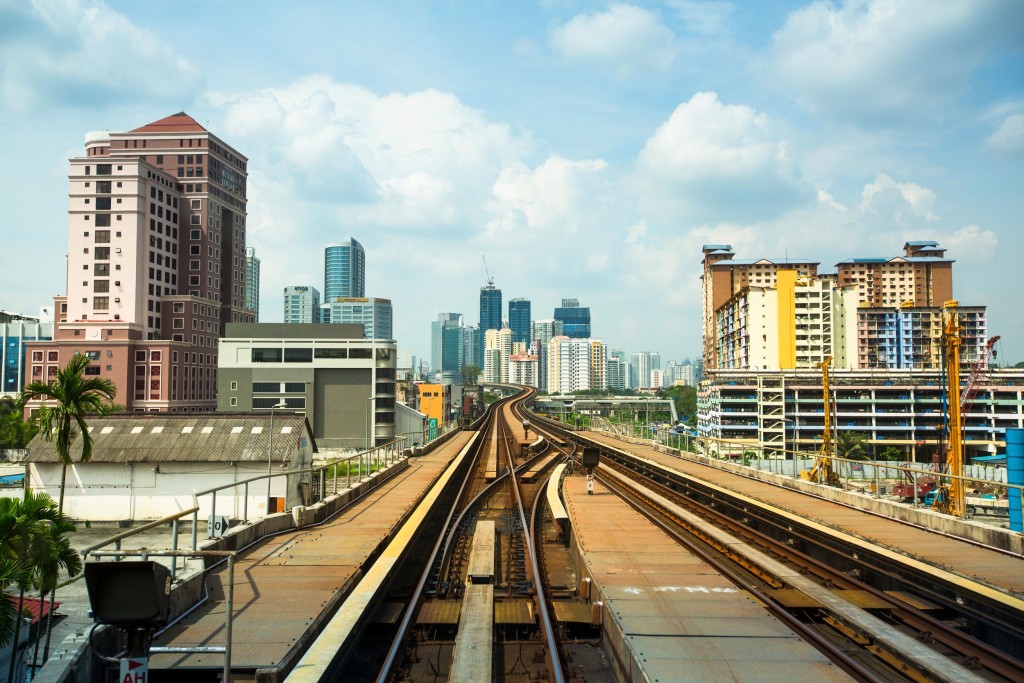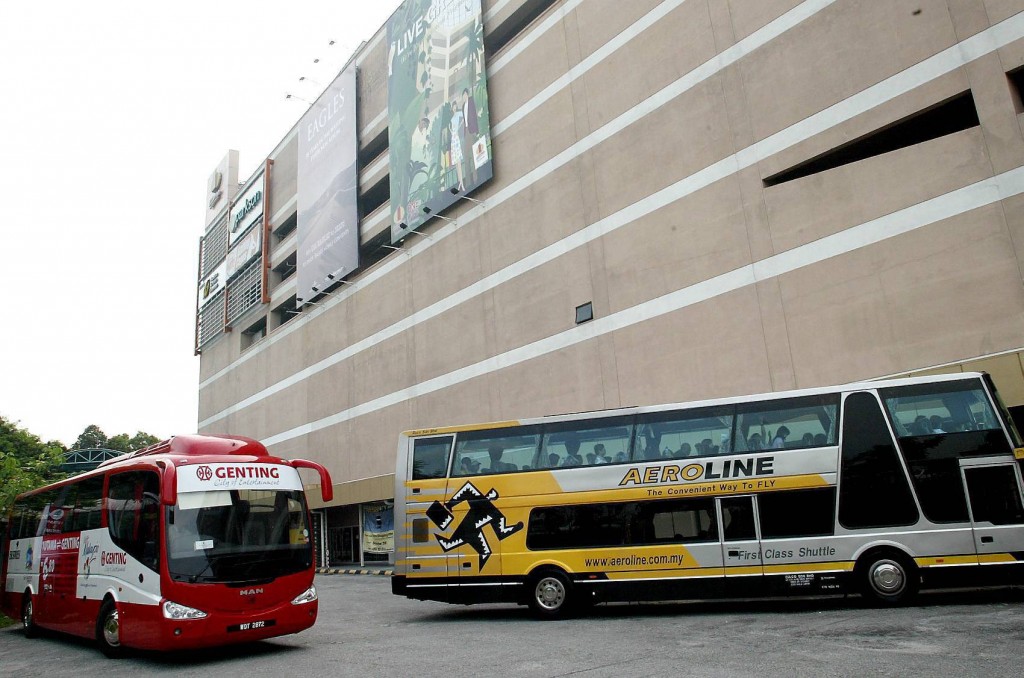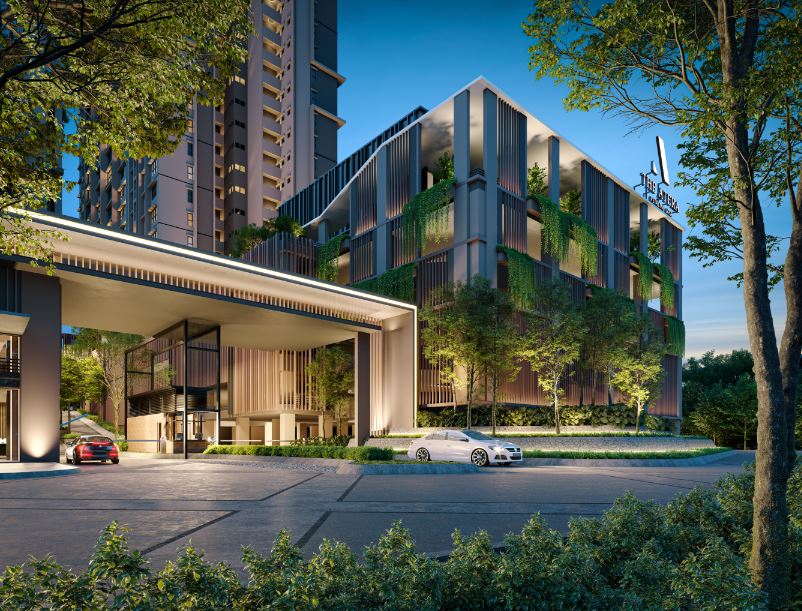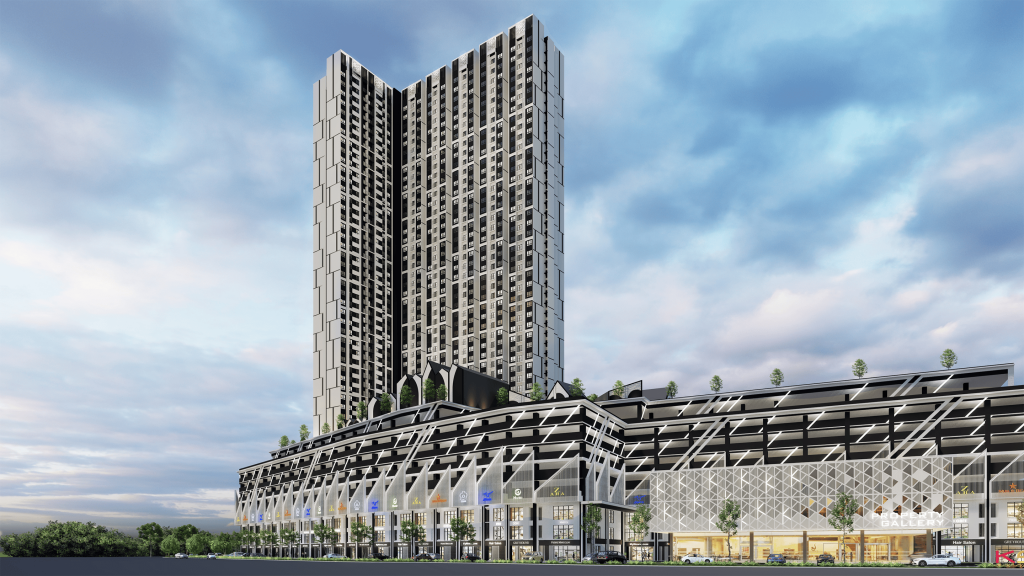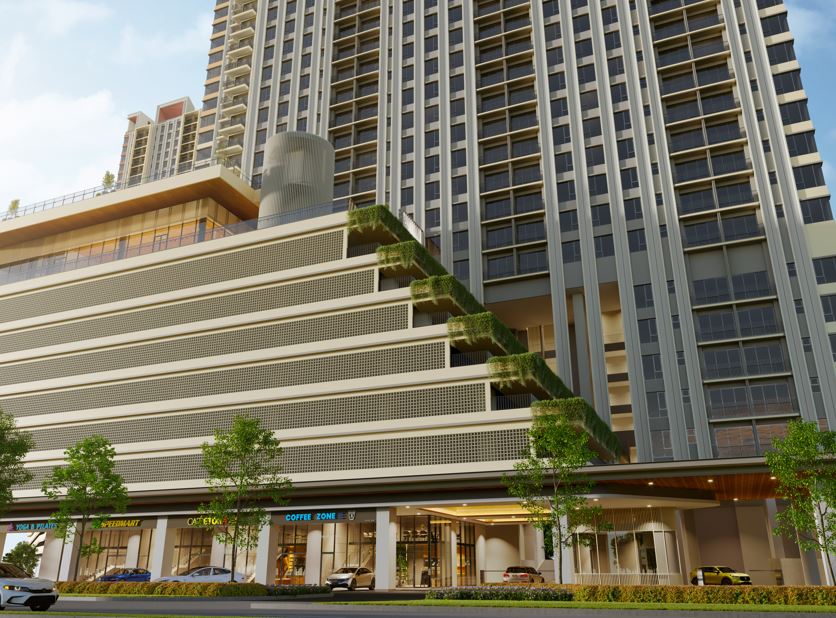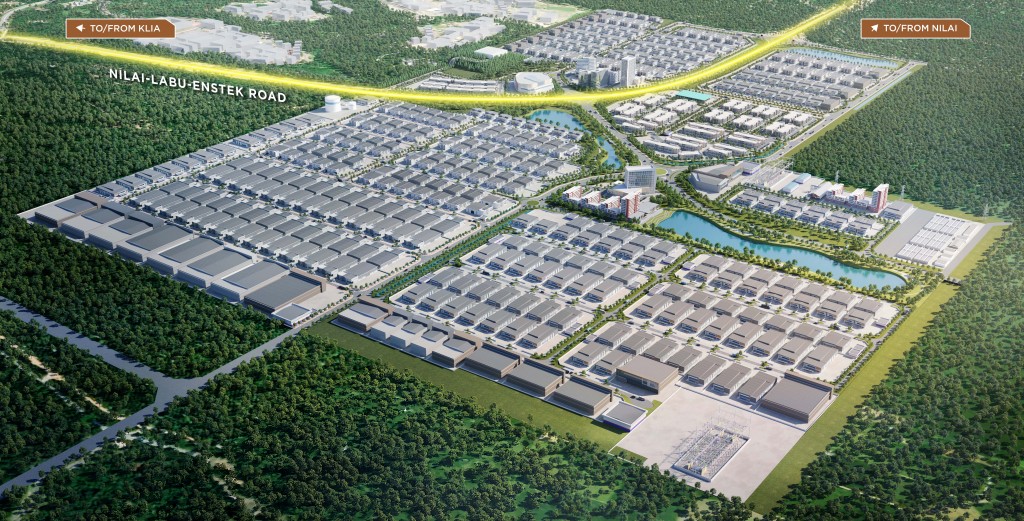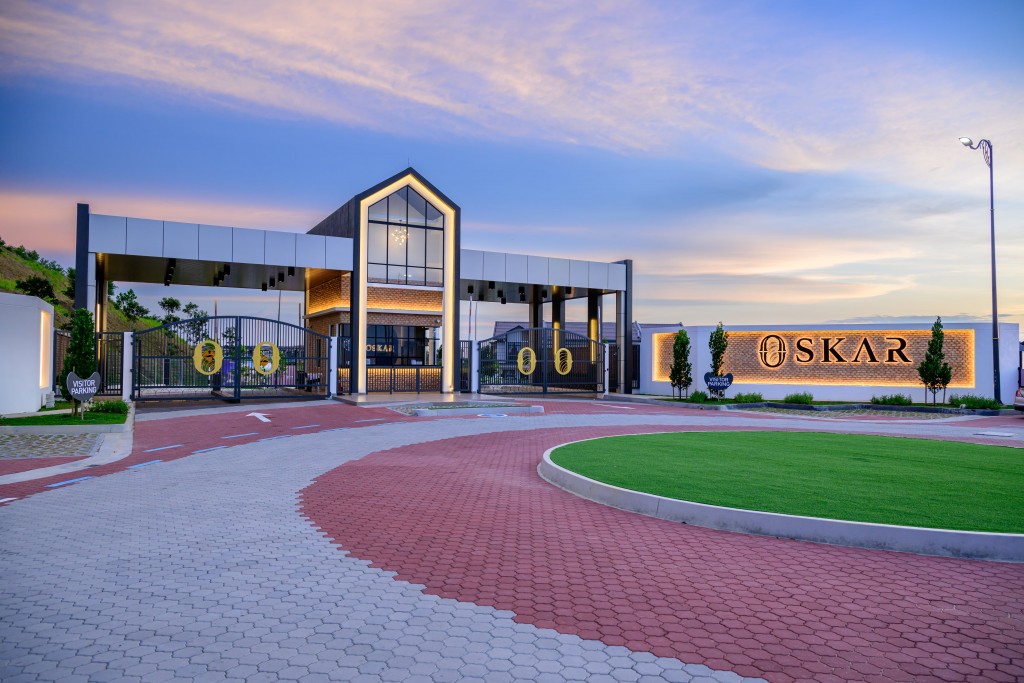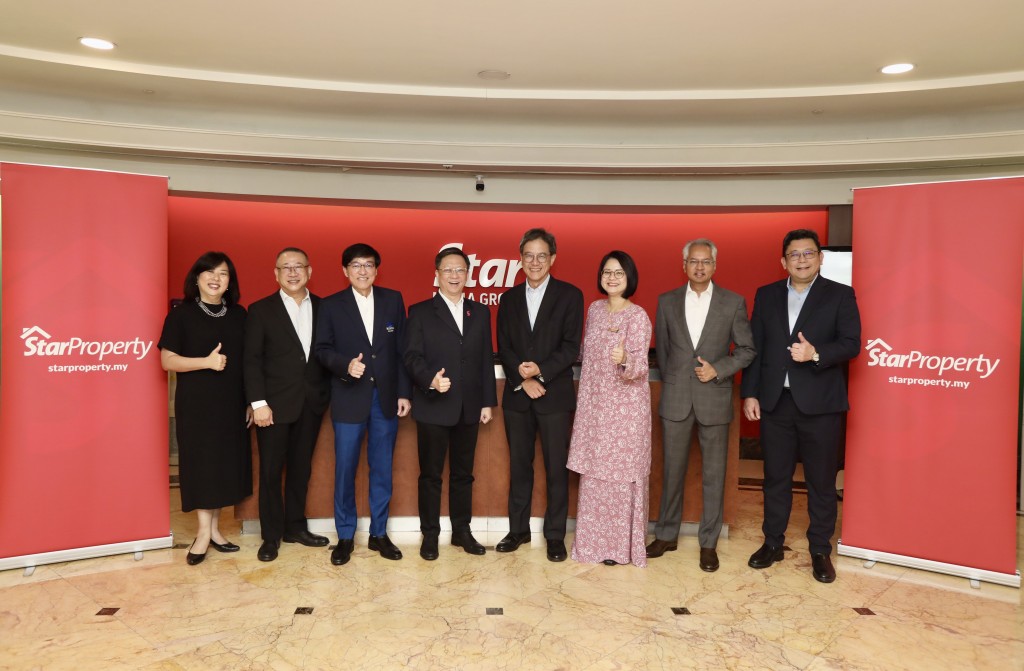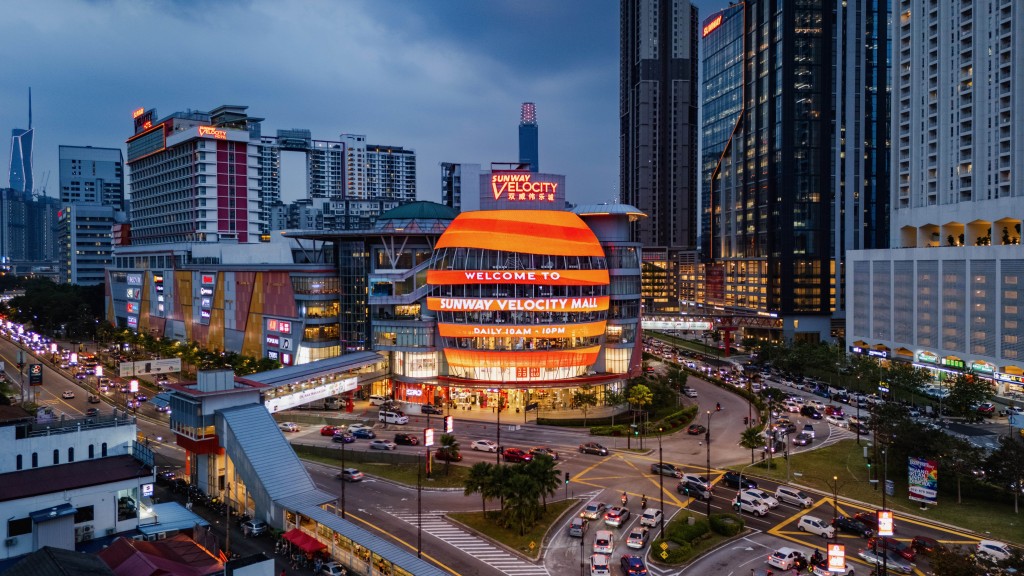
Sunway Velocity is an example where multiple malls can be located in proximity with each other and serve the shoppers in their unique ways. Picture courtesy of Sunway Malls.
Creating a successful marketplace is both an art and science
By Yip Wai Fong
In the realm of shopping malls, numbers do not tell the story. The number of malls in Malaysia (490 as of the end of 2024, according to Malaysia Shopping Malls Association) does not equate to equal popularity. Even large malls don’t necessarily command footfall as shopping online has become part of a lifestyle for many and reduces the need for brick-and-mortar shopping.
For those in the profession of mall management, adaptation – hardly anything to do with numbers – is the key to making a mall successful. But what exactly to adapt to, and how, is both an art and a science, according to Sunway Malls’ chief executive officer HC Chan. For Chan, the role of malls is to be a marketplace that fulfils the fundamental desire of humans to gather and form connections. He said the name Sunway Malls reflects this understanding, where the word shopping is quietly absent.
A veteran with 40 years of experience in managing malls, Chan sees underserved market needs even when the market is crowded. He is perceptive that urbanisation and the resulting push for vertical living drive people to find a more spacious and comfortable place to gather, socialise and shop in the process. This understanding had been applied to Sunway Velocity, a mall with one million sq ft of net lettable area and within walking distance to other malls, MyTown and Aeon Mall Taman Maluri.
“Although there is a high concentration of malls in the area, there are about 12,000 new residential units within 1 to 2km, built over the last couple of years. About a quarter of them were built by Sunway Group. Around Sunway Velocity mall, there are 5,000 or 6,000 residential units. Multiply that by three and you have a population of about 20,000, all linked by walkaways to the mall which is very convenient. This is the unique selling point. You just come down the escalator and walk into the mall, all this access within a few minutes from the place of residence,” he told StarProperty.
To enable seamless access, Sunway Velocity Mall also has two pedestrian bridges to MRT and LRT stations, with a third bridge upcoming. From Jalan Cheras, a tunnel was built to connect to the mall’s basement carpark. Access, whether pedestrian or vehicular, to the mall is a very important consideration, Chan stressed.
“Although there are many other malls around the area, during (heavy) traffic hours, it can take a long time to go to one of them. We are living in a time-poor but cash-rich society. On Mondays to Fridays, everyone is working or attending schools (but on) weekends, the malls are packed. That’s the lifestyle in urban places. (When) people live in a 700 or 800 sq ft apartment, it’s not very conducive to have five or six friends coming to gather. But if you stay near a mall that is five or six minutes away, naturally, you’ll go there. So a mall is a place for people to congregate, not just for shopping,” he elaborated.
A marketplace of experience
With the rise in online shopping, Chan said a mall now has to be defined by the experience it offers because he believes that humans still prefer the sensory experience.
“We already know, say, the size of the shirt and shoes we wear but why do we still want to go to the shop and get a feel of the product? To me, that’s the experiential part. I think humans find it boring to simply find an item and pay for it and very few people come to a mall for a single purpose. What we observe is that, (when) there are so many products and services in a mall, people will enjoy a few different things. 98% of our shoppers stay longer than half an hour or an hour. It is not necessary that they end up buying a lot of things but they come with friends and have a meal and do other things,” he said.
However, Chan is also aware that an experience can be as fleeting as a trend. Hence, regular revamping of the trade-mix and (re)creating the right trade-mix is another major ingredient of what makes a mall perform.
“Over the years, shopping has become smaller in the trade mix. Food and beverages (F&B) and services such as wellness, facial, massage and entertainment have become larger and larger in our offering. We also have a more diverse range of services such as childcare, music classes, dental and clinics. People have to be physically present for the services. You can’t do it online. This is why I said experiential is becoming more and more of what defines a mall. Today, it is very common for F&B to take up 25% or 30% of the trade mix.
“We have 2,000 tenants at Sunway Malls. On average, we change 20% every year. It is quite normal for us. We often do renovations and bring in new tenants, so the product life-cycle is becoming shorter and shorter. In the past, a tenancy was three or four terms. Now, a tenancy agreement can be on a one-plus-one or one-plus-two term,” he explained.

Humans find it boring to simply find an item, pay for it and leave; they enjoy a mall’s environment that offers a variety of goods, services and experience, Chan said.
Other malls on the same wavelength
Four other prime examples of malls that are in close proximity to each other are The Exchange TRX, Pavilion KL, Suria KLCC and LaLaport Bukit Bintang City Centre. These flagship destinations have moved past operating as solitary entities and leverage on a combination of physical proximity to rival malls and seamless integration with the city's rail network.
Like Sunway Velocity Mall, this deliberate strategy creates a multiplier effect, transforming an individual mall visit into a comprehensive, high-density urban shopping experience that maximises footfall and extends consumer engagement across multiple commercial points.
The clustering of these prominent destinations is critical in creating a retail district, driving a powerful destination effect. By existing in close proximity—such as the adjacent high-traffic areas of Bukit Bintang and KLCC—they draw crowds not just by the distinct offerings of one mall but by the guaranteed access to a complete spectrum of high-end, luxury and varied retail options within a small, walkable radius.
This powerful, mutually beneficial synergy effectively extends the average consumer’s dwell time and spending potential, fostering a competitive yet collaborative environment that elevates the entire urban retail corridor.
This potent retail synergy is then amplified by unparalleled rail connectivity. Direct access to major public transit hubs (MRT and LRT lines) transforms these locations into highly functional Transit-Oriented Developments (TODs). By strategically insulating themselves from Kuala Lumpur’s urban traffic congestion, these mega malls guarantee reliable accessibility for both domestic commuters and high-spending international tourists. This integration ensures a reliable, high-volume flow of visitors, solidifying their long-term position not just as successful retail venues but as indispensable anchors of the metropolitan transit system.

Popmart mania: Shoppers pack a store in Kuala Lumpur for the latest blind box drop (sealed packages that hide collectible toys) fueling long queues and feverish excitement. — GLENN GUAN/The Star
Serving everyone
Chan said that what makes Sunway Malls successful is that the company’s malls offer a service to everyone.
“Why is a mall more successful than the rest? For us, everyone is our customer, whether you are a baby or an 80-year-old. We provide facilities for the elderly and we want to promote family values too, so the mall must have the facilities, maybe wheelchairs at the entrance or concierge services. This is important for a good communal destination; it is more than just a place to buy items,” he said.
Chan also added that while Malaysia’s malls cater primarily to the locals, he sees tourists growing in importance.
“In general, most of the mall spending is by the locals. Only 20% or 30% of spending is by tourists. But it will increase in the future because of global tourism. Generally speaking, tourists spend two or three times more than the locals. Tourists are also important to Sunway Group because of our integrated development approach – we have hotels, medical facilities, educational institutions – a lot of Southeast Asians visit our hospitals. We also would like to capture the tourist dollars,” he said.
(Sidebar)
Retailers adopt omnichannel marketing which includes malls
Despite the growth of online shopping, retailers still find that physical shopping remains an attractive platform for their products. Malaysia’s economic stability is a key factor driving the retail sector and has been able to attract new retailers to Malaysia's shopping malls, according to JLL Malaysia.
“While competition in the retail segment remains intense, macroeconomic drivers for retail have been quite positive. Strong domestic demand has supported the retail segment, with turnover recovering quickly to pre-COVID levels in 2023 and maintaining rapid growth since then,” said research and consultancy head Yulia Nikulicheva.
“However, not all malls in Malaysia have benefited equally from this growth – larger malls located in densely populated areas like Klang Valley, Penang and Johor have thrived, while other states have witnessed lower tenant activity as retailers prioritise easily accessible, high-traffic locations,” she added.
Nikulicheva also said that in 2024-2025, the new market entrants have come from the Asia Pacific region as well as Europe and span various categories. In F&B, they are Luckin Coffee, Benihana, Tim Hortons and Cha Panda. In fashion, Urban Revivo and JNBY have opened their outlets, as well as upper-middle and luxury fashion brands Marimekko and Fauré Le Page.
In addition, several brands have undertaken expansion, such as sportswear and activewear XStep, experience and entertainment retail Escape (in Alamanda mall), Bomb Battle (in Sunway Pyramid), as well as the rapid growth of Pop Mart stores throughout Malaysia, Nikulicheva said.
Contrary to the talk on shopping malls becoming obsolete, Nikulicheva said that consumer behaviours have proved that both physical and online shopping would co-exist.
“Five or 10 years ago, some people predicted the death of shopping malls as online retail was expected to overtake traditional shopping. What we see now is that in some retail categories, customers often choose online retail over traditional brick-and-mortar stores, though this varies by country. In Malaysia, for categories such as F&B, cosmetics, consumer electronics and household goods, customers tend to use both online and offline platforms. At the same time, people still prefer to visit shopping malls when buying clothing, sports goods and other categories associated with personal experience and emotions,” she said.
Concurring with Sunway Malls’ chief executive officer HC Chan, Nikulicheva also said that shopping malls are experiencing transformation in response to changing customer behaviours, becoming meeting places where people can not only shop but also socialise and spend their leisure time. In this changed environment, retailers are responding with omnichannel strategies that allow customers to have a smooth shopping journey by starting their purchases online and then moving offline and vice versa. She also added that typically, large retailers are better able to provide a more seamless shopping experience that incorporates technology.
“Larger retailers are more advanced in technology and may offer various solutions for successful shopping, including not just finding the right item to purchase but also providing alterations and clothing fit testing,” she observed. “From a technology perspective, this involves seamless integration between digital promotions delivered through email, text messages or mobile apps and their implementation in the physical store, depending on how the retailer communicates with customers. Some retailers offer limited collaborative collections and partnerships that provide additional value for customers. Retailers may also host experiential in-store events such as styling classes, expert demonstrations, workshops and celebrity collaborations.”
Nevertheless, fundamentals such as location and good management remain crucial considerations for retailers.
“It might be fair to say that in the current environment, competition between malls for retailers is intensifying, particularly as consumers shift some of their purchases online. That said, location remains the key factor impacting retailers’ decisions. Location implies not just the address but also the specific shopping mall’s performance.
“We often see locations where two or even three malls are situated very close together but retailers still prefer only one of them because it has the right tenant mix appealing to their target customers, good footfall and a property management team that continuously promotes the mall through various events and promotions that attract loyal customers. The property management team may also proactively manage the tenant mix and bring in new tenants to maintain the mall’s appeal and competitiveness,” she said.

Large retailers are better able to provide a seamless shopping experience that includes both online and offline platforms, Nikulicheva said.
Stay ahead of the crowd and enjoy fresh insights on real estate, property development and lifestyle trends when you subscribe to our newsletter and follow us on social media.

